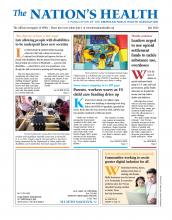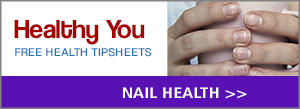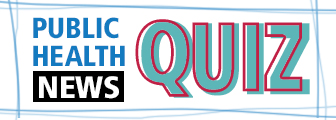
Photo by FatCamera, courtesy iStockphoto
You don’t need to know the moves to the latest social media video to reap the benefits of dance.
Be it hip hop, ballet, tap, ballroom, swing or something else, scientific studies show that dancing can improve heart, lung and brain health. Dancing can also lift mood, improve balance, increase flexibility, and strengthen muscles and bones, which can reduce osteoporosis risks. Dancing can even improve self-esteem and mental functioning.
A recent study found that dancing can lower the risk of dying from cardiovascular disease even more than walking. Those big bursts of energy that come from dancing to your favorite song can really get your heart going! And numerous studies show that dancing can significantly increase serotonin, a natural mood stabilizer associated with happiness and reduced anxiety.
“Dance benefits us by making the connection of mind, body and spirit,” says dance and movement specialist Melissa Turnage, an artist-in-residence at the University of Alabama at Birmingham Hospital. “It’s a natural inclination in the human body to move. Our brains are hardwired to dance.”
Have you ever noticed that toddlers respond to music by instinctively swaying and bouncing to rhythm? Aside from being really adorable, those dance moves help develop motor skills, balance and coordination. And the benefits continue throughout life. As we grow older, dance enables us to maintain flexible and strong bodies and improves balance.
Science also tells us dancing releases endorphins, the brain’s feel-good chemicals, which improve mental health. And when we do it in groups, dancing can combat feelings of loneliness and open social channels.
Dancing also helps keep the mind sharp. “When you’re learning choreography, it’s a lot about cognitive recall, focus and concentration,” she said. “You’ve got to remember the steps and be able to do them, which is great because you don’t have time to think about the things that you’re worried about in the midst of trying to learn a sequence of steps. But once you learn the steps, it’s fun. It builds a sense of community and confidence.”
Dance is best defined as the body moving in rhythm to something — it doesn’t have to be music — and you don’t need to dance like a pro to enjoy the benefits.
“Dance is art in motion,” Turnage says. “It’s ethereal. It doesn’t last. It’s in the moment.”
From freeform to ballet, every dance style has its own health benefits. Salsa, hip-hop and Zumba are especially good for improving cardiovascular health, belly dancing can improve your core muscles, such as the glutes, stomach and thighs, and ballet can improve your posture and balance.
And from traditional Greek dancing to Hawaii’s customary hula, dancing can connect you with your spiritual and cultural roots and beyond.
Whatever form you choose, dancing can help you express feelings and transform those feelings into motion. Most importantly, dancing is accessible and inclusive for everyone. Turnage’s dance classes include people who use walkers, scooters and canes. Dancing can even be done from a chair or wheelchair.
“I have two dancers who are completely deaf,” she says. “They can’t hear the music, but they follow the movement. And they keep showing up every week. They’re getting a benefit, not with the music, but with the movement itself.”
The important thing is to find dances you enjoy and not be afraid to try out new ones. Concentrate on how it feels to move your body, not how you might look.
“Dance is your birthright,” Turnage says. “Find what touches your heart and then just step out into that world. It starts with one step. Sign up for a class. If it’s not for you, don’t give up, because there’s some form of dance that everybody can do.”
Don’t drop the beat
A great thing about dance is that it’s universal. We might not all speak the same language, but everybody understands dance. Best of all, dancing can easily be incorporated into every step of your day.
Find your rhythm: Whether you’re folding laundry, walking your dog, taking a shower or doing the dishes, tune in to what makes you happy and bust a move.
Enjoy the music of life: The rain, the wind, the songs of birds all have their own rhythm. Lean into it, feel it and just let your body move.
Break to dance: You don’t need to be a skilled dancer to step away from your desk and find your footwork. Bopping to your favorite beats is a great way to get moving and stay healthy.
Small moves add up: Make time every day to boogie. Set a reminder on your phone. According to the American Heart Association, just one hour of dancing a week for a year is like walking from Chicago to Indianapolis.
“Dance breaks can be as simple as turning music on and standing up and sitting down in a chair 10 times,” Turnage says. “And then you can add some arm and shoulder movements to make it more fun. Anything that will transfer the sedentary place you might have been in if you’ve been sitting at a computer.”
- Copyright The Nation’s Health, American Public Health Association









